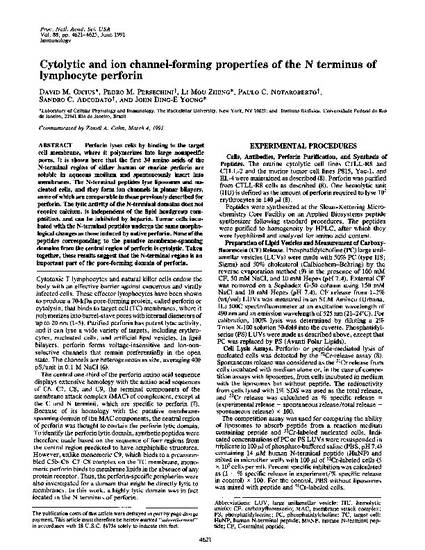
Perforin lyses cells by binding to the target cell membrane, where it polymerizes into large nonspecific pores. It is shown here that the first 34 amino acids of the N-terminal region of either human or murine perforin are soluble in aqueous medium and spontaneously insert into membranes. The N-terminal peptides lyse liposomes and nucleated cells, and they form ion channels in planar bilayers, some of which are comparable to those previously described for perforin. The lytic activity of the N-terminal domains does not require calcium, is independent of the lipid headgroup composition, and can be inhibited by heparin. Tumor cells incubated with the N-terminal peptides undergo the same morphological changes as those induced by native perforin. None of the peptides corresponding to the putative membrane-spanning domains from the central region of perforin is cytolytic. Taken together, these results suggest that the N-terminal region is an important part of the pore-forming domain of perforin.
Available at: http://works.bepress.com/david-ojcius/78/
